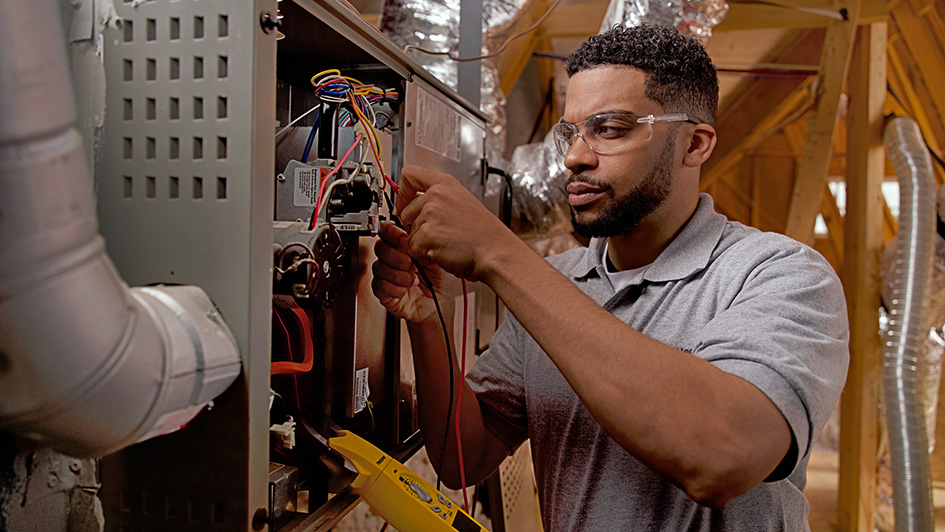
A furnace is almost always a background player at home, ensuring you're warm in the cold winter months. It frequently won't be noticed until a malfunction appears.
One cause may be that your furnace has a cracked heat exchanger. It can potentially be hazardous, so it’s critical to learn the evidence of a cracked heat exchanger and what you should do if you suspect that may be the problem.
What Is a Heat Exchanger in a Furnace?
A heat exchanger helps move heat from the combustion chamber in your furnace to the air that circulates throughout the ventilation. It generally accomplishes this through coils or tubes that heat the air while functioning as a barrier to keep byproducts created in the combustion chamber, called flue gasses, from getting out into your home.
Is a Cracked Heat Exchanger Dangerous?
Because of its key role, it shouldn't come as a surprise that a broken heat exchanger can pose a risk. A damaged heat exchanger can permit dangerous gasses – like carbon monoxide, which can be lethal – to circulate across your home.
For obvious reasons, never turn on your furnace if you think you're dealing with a cracked heat exchanger, as doing so could make the entire household sick. Contact an HVAC professional as soon as possible if you think your furnace has a cracked heat exchanger that needs to be repaired.
Four Warning Signs of a Cracked Heat Exchanger:
- Furnace shuts off: A cracked heat exchanger can cause your furnace to shut off.
- Unusual Smells: If the air escaping your furnace has a powerful chemical odor, it might be evidence gasses are leaking through cracks in your heat exchanger. These gasses, which may smell like formaldehyde, are a significant warning sign.
- Carbon monoxide alarm is triggered or you recognize health problems: If a cracked heat exchanger is releasing carbon monoxide into your home, your carbon monoxide alarm should go off or household members may experience signs of carbon monoxide poisoning. Complications include headaches, dizziness, weakness, nausea, vomiting or feeling tired. If an alarm goes off or you feel unusually tired, get out of the home right away and then call for help.
- Soot: If you find black sooty buildup on the exterior of your furnace, it’s another sign something might be seriously wrong.
What to Do if a Furnace Heat Exchanger is Cracked
If you suspect your furnace has a cracked heat exchanger, contact a pro with extensive experience in furnace installation Weatherford right away so they can inspect your system and, if required, handle a furnace heat exchanger replacement. Costs often differ depending on the situation, but estimates run in the neighborhood of $1,000 to $3,000.
However, the good news is that heat exchangers are regularly covered by the warranty. You’ll want to review the warranty paperwork on your furnace, since while the warranty might not cover the entire cost of repairs, it can significantly shrink your bill.
How to Avoid a Cracked Heat Exchanger in Your Home
One of the best ways to avoid problems in your furnace overall is via routine furnace maintenance. Furnaces provide the best possible return on investment when they work efficiently. Calling a certified professional to inspect your furnace for broken-down parts, clogs in the air filters and other common problems can keep you from getting a big bill later on.
It’s also helpful to inspect your furnace filters every few months – it’s ideal some filters be swapped out every 90 days or sooner if they are dirty or grimy. While the filters aren't a part of the heat exchanger itself, the strain of pulling air through a clogged filter makes your entire furnace work harder to accomplish its job. And the harder your furnace works, the more deterioration pieces like the heat exchanger will experience.
